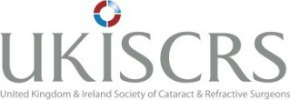For FAQs regarding Coronavirus please click here
Who gets recurrent corneal erosion?
This is one of the most common and neglected ocular disorders, usually occurring after eye trauma, but mostly occurring spontaneously. More common in women than men, it usually occurs after 40 years of age[footnote]Medscape: Recurrent Corneal Erosion[/footnote]
YOU HAVE AN EYE CONDITION THAT COULD TAKE YEARS TO HEAL
As you sleep, a portion of your eye’s surface sticks to your eyelid and rips away when you open your eyes in the morning. Typically, the prognosis is very good to excellent with proper medical attention. However, the healing process may take years. You should, therefore, do all you can to take good care of your eyes. Always wear protective sunglasses when the sun is out and always use lubricating eye drops. You must also take care when opening your eyes upon awakening.
YOUR EYES CAN FEEL VERY UNCOMFORTABLE
You might feel mild to severe pain, particularly upon awakening – like someone is putting their finger on your eye. You can feel a foreign body sensation in your eye – like a piece of sand right in the centre. It can last for an hour, or the entire day. Your eyes may be excessively sensitive to light and you might experience blurred vision. You may also find your eyes tear up more than usual.
AN AVERAGE DAY WITH RECURRENT CORNEAL EROSION
Every few weeks, or perhaps every few months, you might awaken to intense pain when you open your eyes. Blinking throughout the day may also lead to pain. When looking in the mirror, your eyes might appear very red. Getting dressed, walking to work, or driving into the light can all be much harder than they need to be. You might experience blurred vision if it happens right over the pupil.
A CONDITION THAT CAN PROFOUNDLY AFFECT YOUR RELATIONSHIPS
An episode of recurrent corneal erosion can significantly affect your professional and social life. You may need to miss work. Social events become the lowest priority in your life. The pain, photosensitivity, and reduced vision can affect your relationships which can lead to significant emotional distress.
HELP IS AT HAND
If you feel stuck in the cycle of extremely painful erosions followed by slow healing, it can feel that there is no end in sight and that you will never recover. In reality, it is rare for this condition not to resolve itself following appropriate expert treatment. Let me guide you through this condition so you can get back to a normal life.
Affiliations and memberships
I am proud to be associated with these organisations as a member or consultant
Supplementary information about recurrent corneal erosion
In my expert hands, you certainly don’t need to know all of the information I’ve included in the toggles below. If you’d like to know how it all works, however, open them and learn more.
Take the first step
Find out if your eyes are suitable for vision correction
Book a free screening now or get us to give you a call back to answer questions

About the author
Mr Alex J. Shortt | Consultant Ophthalmic Surgeon
MB BCh MSc PhD FRCOphth PGDipCatRef
I’m Alex Shortt, a highly trained academic researcher and Consultant Ophthalmic Surgeon based in London’s famous Harley Street medical district. I trained and worked as a consultant for 14 years at London’s Moorfields Eye Hospital. I specialise in advanced technologies for correcting vision, including cataract surgery, implantable contact lenses and laser vision correction.









